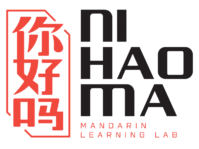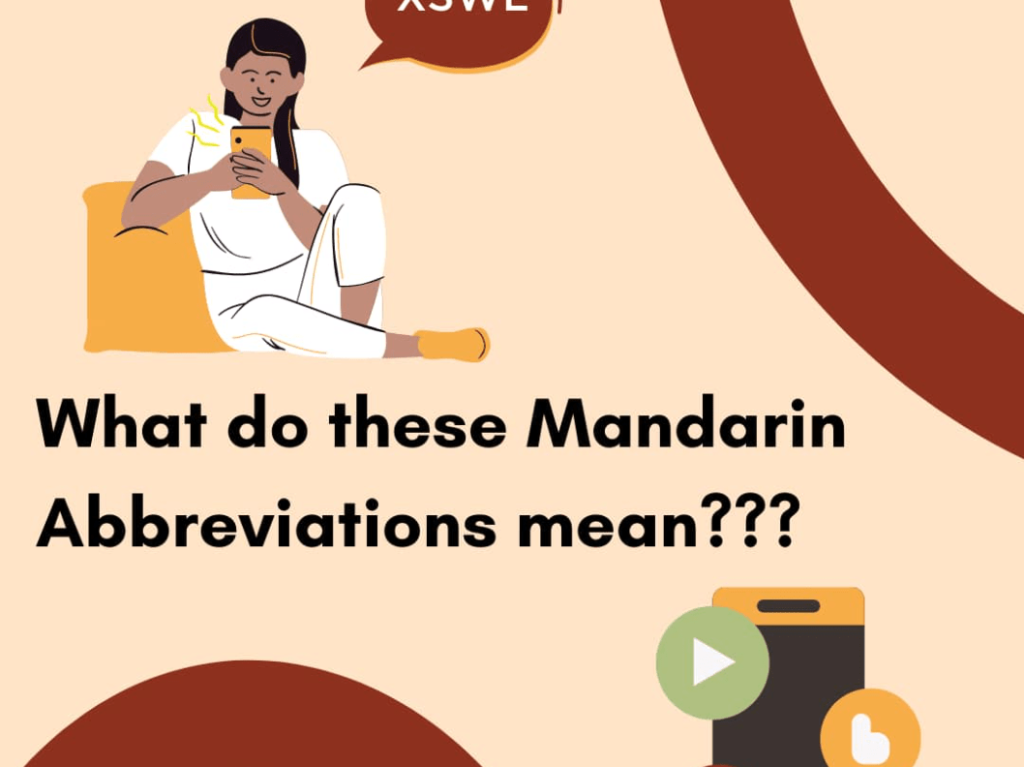As the leaves begin to change color and a crisp chill fills the air, it’s a sign that Halloween is just around the corner. This festive occasion—filled with carved pumpkins, witches, ghosts, and mountains of candy—has crossed cultural borders and is now celebrated in many countries, including those with Chinese-speaking communities. In this article, let’s explore what Halloween in Chinese is called, along with key vocabulary and cultural insights!
What Is Halloween in Chinese?
In Chinese, Halloween is called 万圣节 (Wànshèngjié). However, in China and many other Mandarin-speaking regions, Halloween is mainly celebrated for fun—through costumes and parties—without the deeper religious or spiritual significance it holds in the West.
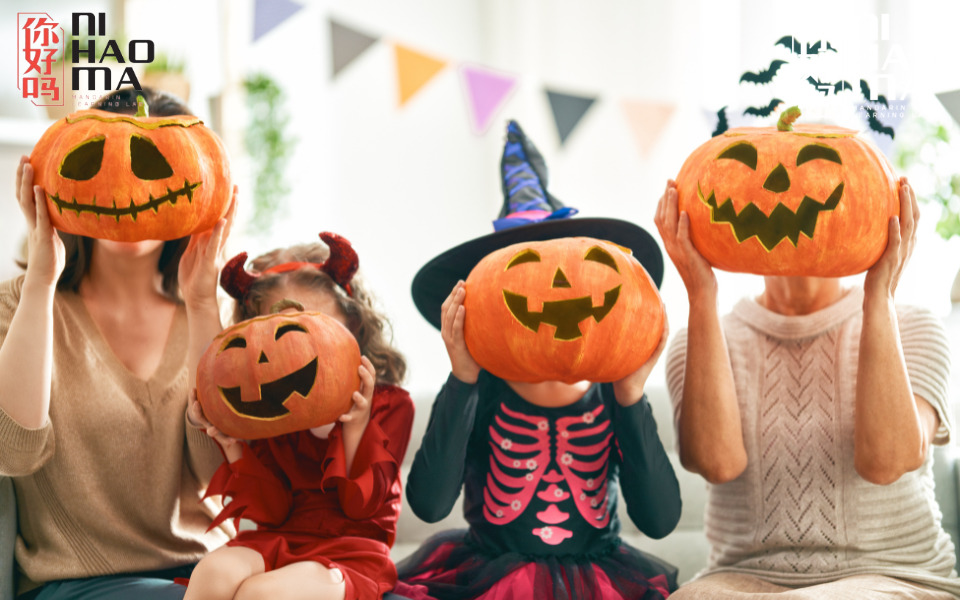
The term 万圣节 (Wànshèngjié) is made up of three characters:
- 万 (Wàn) – means “ten thousand” or “all,” indicating a large number.
- 圣 (Shèng) – means “saint” or “holy.”
- 节 (Jié) – means “festival” or “holiday.”
So, 万圣节 can be loosely translated as “All Saints’ Festival” or “Festival of All Saints.” This term is a translation of All Saints’ Day, a Catholic observance on November 1st, following All Hallows’ Eve—the original name of Halloween on October 31st. Although Halloween and All Saints’ Day have different origins and traditions, in many non-Western countries the term “All Saints’ Festival” is often used to refer to both Halloween night and the following day.
Origins of Halloween
Halloween traces its roots back to the ancient Celtic festival of Samhain, which was celebrated over 2,000 years ago in areas that are now Ireland, the UK, and northern France. Samhain marked the end of summer and the beginning of winter—a time the Celts believed was the boundary between the world of the living and the dead. They believed that on the night of October 31st, spirits could return to roam the earth.
To protect themselves from evil spirits or avoid being recognized, the Celts would extinguish their hearth fires, wear spooky costumes, and don masks when going out at night. In the 8th century, as Christianity spread, Pope Gregory III declared November 1st as All Saints’ Day, incorporating some elements of Samhain. The evening before became known as All Hallows’ Eve, which later evolved into Halloween.
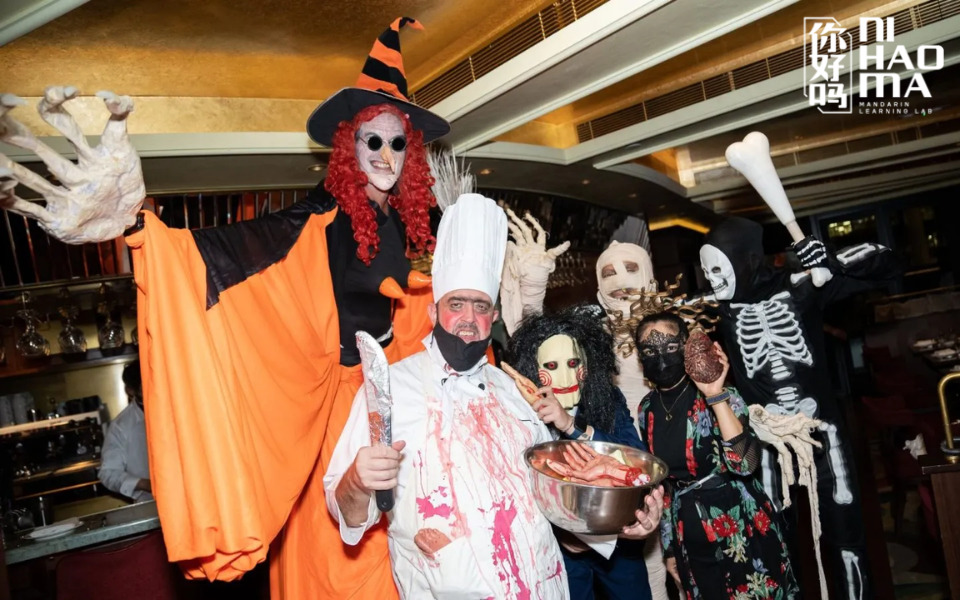
Today, Halloween is widely recognized as a time for fun and entertainment, rather than a religious event. Here are some popular activities often associated with the celebration—even in Chinese-speaking regions where Halloween has become a trendy, modern holiday:
- Trick-or-Treating: Children dress up as ghosts, superheroes, princesses, or monsters and go door to door saying “Trick or treat!” to get candy. If they don’t receive treats, the idea is that they might “trick” the homeowner—though usually in good fun.
- Costume Parties: From kids to adults, everyone enjoys dressing up for Halloween. Common costumes include vampires, witches, zombies, superheroes, cartoon characters, or even creative and funny themes. Parties are often held at homes, schools, amusement parks, or clubs.
- Pumpkin Carving: People carve scary or silly faces into hollowed-out pumpkins and place candles inside to make jack-o’-lanterns. This tradition stems from the legend of Jack-o’-lantern, a man who tricked the devil and was doomed to wander the earth with a light inside a turnip (later replaced by a pumpkin).
- Decorating Homes: Homes and yards are decorated with Halloween-themed items like fake spider webs, skeletons, scarecrows, witches, bats, and more to create a spooky vibe.
- Telling Ghost Stories & Watching Horror Movies: Halloween night is the perfect time for people to gather and share creepy stories or enjoy scary movies together. It’s all about the thrill and the chills!
Vocabulary about Halloween in Chinese
Learning vocabulary by topic is an effective way to improve language skills. In this section, we’ll explore a comprehensive list of Halloween in Chinese vocabulary—a globally celebrated festival filled with iconic characters, spooky decorations, and exciting activities!
Halloween Costume Characters in Chinese
| Chinese | Pinyin | Meaning |
|---|---|---|
| 鬼 | guǐ | Ghost |
| 骷髅 | kūlóu | Skeleton |
| 僵尸 | jiāngshī | Zombie |
| 吸血鬼 | xīxuèguǐ | Vampire |
| 巫婆 | wūpó | Witch |
| 魔法师 | mófǎshī | Wizard |
| 怪物 | guàiwù | Monster |
| 狼人 | lángrén | Werewolf |
| 木乃伊 | mùnǎiyī | Mummy |
| 南瓜人 | nánguā rén | Pumpkin-headed figure |
| 海盗 | hǎidào | Pirate |
| 死神 | sǐshén | Grim Reaper |
| 小丑 | xiǎochǒu | Clown |
| 蜘蛛 | zhīzhū | Spider |
| 精灵 | jīnglíng | Elf |
| 科学怪人 | kēxué guàirén | Frankenstein’s Monster |
| 猫女 | māonǚ | Catwoman |
| 超人 | chāorén | Superman |
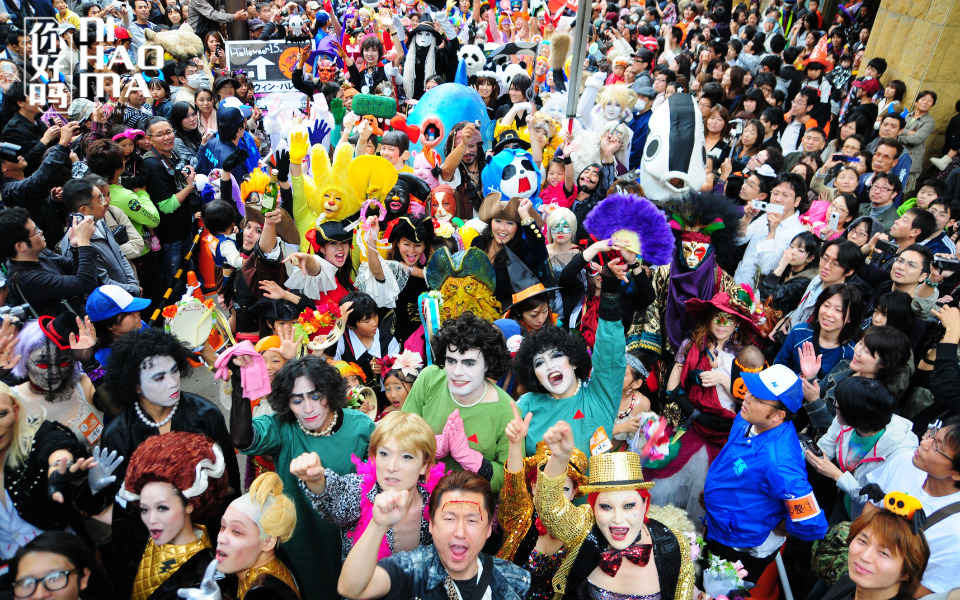
Halloween Activities in Chinese
There are many fun activities during Halloween. Here’s how to talk about them in Chinese:
| Chinese | Pinyin | Meaning |
|---|---|---|
| 举办派对 | jǔbàn pàiduì | Host a party |
| 参加化妆舞会 | cānjiā huàzhuāng wǔhuì | Attend a costume ball |
| 玩游戏 | wán yóuxì | Play games |
| 讲鬼故事 | jiǎng guǐ gùshì | Tell ghost stories |
| 看恐怖电影 | kàn kǒngbù diànyǐng | Watch horror movies |
| 设计万圣节服装 | shèjì wànshèngjié fúzhuāng | Design Halloween costumes |
| 拍照打卡 | pāizhào dǎkǎ | Take photos/check in |
| 装饰 | zhuāngshì | Decorate |
| 玩“不给糖就捣蛋”游戏 | wán “bù gěi táng jiù dǎodàn” yóuxì | Play “trick or treat” |
| 做手工南瓜灯 | zuò shǒugōng nánguādēng | Make handmade jack-o’-lanterns |
| 玩密室逃脱 | wán mìshì táotuō | Play escape room games |
| 化妆 | huàzhuāng | Put on makeup/costumes |
| 猜谜语 | cāi míyǔ | Guess riddles |
| 游行 | yóuxíng | Parade |
| 捉弄 | zhuōnòng | Prank or trick someone |
Halloween Decorations & Emotions in Chinese
| Chinese | Pinyin | Meaning |
|---|---|---|
| 南瓜灯 | nánguādēng | Jack-o’-lantern |
| 蜡烛 | làzhú | Candle |
| 糖果 | tángguǒ | Candy |
| 巧克力 | qiǎokèlì | Chocolate |
| 饼干 | bǐnggān | Cookies |
| 面具 | miànjù | Mask |
| 气球 | qìqiú | Balloon |
| 披风 | pīfēng | Cape |
| 扫帚 | sàozhou | Broom (witch’s broom) |
| 魔术帽 | móshù mào | Wizard hat |
| 魔杖 | mózhàng | Magic wand |
| 镰刀 | liándāo | Scythe (Grim Reaper’s) |
| 血浆 | xiějiāng | Fake blood |
| 骷髅装饰 | kūlóu zhuāngshì | Skeleton decoration |
| 鬼屋 | guǐwū | Haunted house |
| 蜘蛛网 | zhīzhūwǎng | Spider web |
| 墓碑 | mùbēi | Tombstone |
| 棺材 | guāncai | Coffin |
| 头骨 | tóugǔ | Skull |
| 害怕 | hàipà | Scared |
| 紧张 | jǐnzhāng | Nervous |
| 紧张 | xīngfèn | Excited |
| 惊悚 | jīngsǒng | Thrilled |
| 恐怖 | kǒngbù | Horrified / Terrified |
Halloween in Chinese: Sample Dialogues for Practice
Halloween is no longer just a Western celebration—it has become increasingly popular among young people in China and across Asia. During this spooky holiday, you can meet up with friends, dress up in costumes, go trick-or-treating, or join parties. Below are two simple dialogues to help you practice talking about Halloween in Chinese, right from home!
Dialogue 1: Asking a Friend About Halloween Plans
A: 你万圣节有计划吗?
Nǐ Wànshèngjié yǒu jìhuà ma?
Do you have any plans for Halloween?
B: 我打算和朋友一起去参加化妆舞会。你呢?
Wǒ dǎsuàn hé péngyǒu yìqǐ qù cānjiā huàzhuāng wǔhuì. Nǐ ne?
I’m planning to go to a costume party with friends. How about you?
A: 我可能会在家看恐怖电影,还没决定。
Wǒ kěnéng huì zài jiā kàn kǒngbù diànyǐng, hái méi juédìng.
I might just stay home and watch horror movies, still not sure yet.
B: 要不一起去鬼屋?听说很刺激!
Yàobù yìqǐ qù guǐwū? Tīngshuō hěn cìjī!
Why not go to a haunted house together? I heard it’s super thrilling!
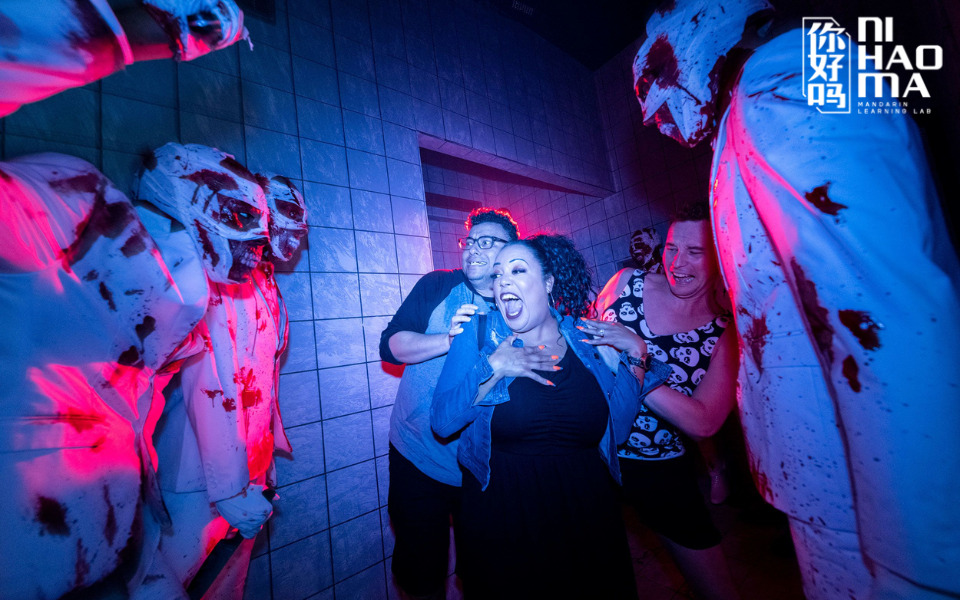
Dialogue 2: Talking About Halloween Costumes
A: 你的服装太酷了!你扮成什么?
Nǐ de fúzhuāng tài kù le! Nǐ bàn chéng shénme?
Your costume is so cool! What are you dressed as?
B: 我是吸血鬼。你呢?
Wǒ shì xīxuèguǐ. Nǐ ne?
I’m a vampire. And you?
A: 我打扮成女巫,还带了扫帚!
Wǒ dǎbàn chéng nǚwū, hái dài le sàozhou!
I dressed up as a witch—and brought a broomstick too!
B: 太棒了!我们一起去“不给糖就捣蛋”吧!
Tài bàng le! Wǒmen yìqǐ qù “bù gěi táng jiù dǎodàn” ba!
That’s awesome! Let’s go trick-or-treating together!
Conclusion
In this post, you’ve learned how to say Halloween in Chinese and picked up some themed vocabulary. Now you not only know the key phrases related to this fun holiday, but also its cultural background and meaning. With the help of this guide from Ni Hao Ma, we hope you’re ready to confidently discuss and enjoy Halloween in Chinese—whether you’re attending a party, decorating your home, or just chatting with friends!
